Super Charge your Search Intent
Want to create yourself a whopping impact on your rankings, why not try to spice up your search intent? With algorithms constantly being updated by Google, search intent is becoming a fundamental factor for ranking on SERP’s and therefore it is important to take notice of how to comply with them.
In this blog, we are going to tell you everything you need to know about search intent and how you can fly up the ranks on SERP’s.
What do we mean by Search Intent, and why is it important?
Search intent is a term that describes the main purpose of a user’s online search. In recent times it has become one of the most important ranking factors as Google has been working hard to improve its algorithms.
Google’s algorithm ‘BERT’ (Bidirectional Encoder Representations from Transformers) could be used as a good example of this point. BERT was introduced in 2019 and was put in place to understand the context of all the words in sentences, which means that Google has now got a better understanding of search queries on the internet and understands the intent behind it. It is always best to listen to Google!
What are the different types of Search Intent?
The main types of search intent are the following:
- Navigational, the intent of wanting to visit a specific website or brand. For example, searching Red Ant Solutions in Google. Of course, 😉!
- Commercial, the intent of wanting to buy a product or a service and investigating a brand further. For example, searching best SEO companies UK?
- Informational, the intent of users looking for detailed answers to questions they are wanting to know. For example, what is search engine optimisation?
- Transactional, the intent of wanting to purchase there and then. For example, LG 42-inch smart TV in black. The user will already have a rough idea of what they are looking for from conducting commercial intent and now is ready to make a transaction.
Our top tips for optimising your Search Intent:
1. Research keywords and add SEO strategies to your content
First and foremost, it is important to think about the user and plan specific search engine optimisation (SEO) factors into your content as this is going to be the main way of gaining traffic to your landing pages. This means finding your main keywords for your industry and making sure you put them into the content. You also want to think of SEO health factors such as heading structures, internal linking, optimised images and most importantly high-quality content.
2. Do your homework on search intent
When editing or creating new content for your website, another tip is to make sure you do your research on the search intent for queries related to your content. This includes looking on Google SERP’s and finding out what the main intent is for your keywords and basing your content on that. You can refer to the four types of intent above.
As an experienced digital marketing agency, we like to use an SEO tool called SEMrush to assist with this process. SEMrush has recently updated its platform which has enabled users to view what the search intent is for current search terms – very handy indeed! So be sure to look out for other tools similar on the internet and let us know what you find.

3. Understand how intent relates to SERP features
Briefly mentioned above, it is very important to browse search engine results pages (SERPs) to determine your search intent. To add to this, it is also key to understand what SERP features are and understand how intent can correlate with them, have a look at Moz’s cool article showing all types of SERP features! Once you have got the hang of finding them, they can be easy to spot. To give you a head start…we are going to show you some SERPs using the same examples we have used above!
Navigational – A navigational search consists of a user trying to find their way to a specific page or domain. Let’s use ‘Red Ant Solutions’ as an example, searching this in Google will usually provide you with URL link options to relevant pages.
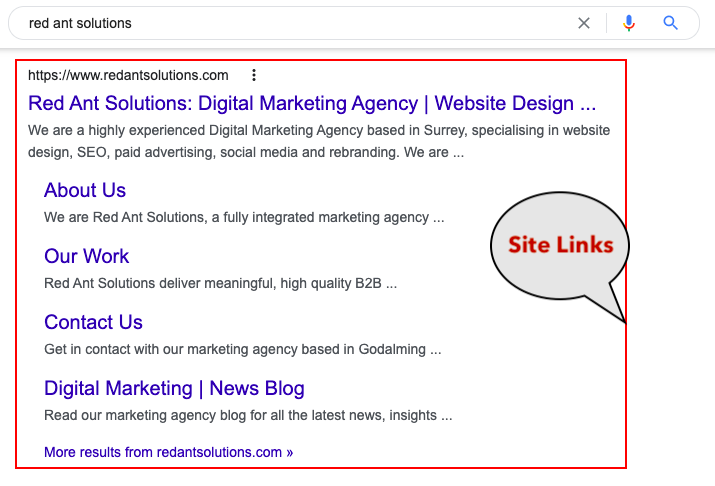
Depending on the specific search query, there could also be additional features such as knowledge panels and top stories. For instance, using the search term ‘Apple’, a big brand name will show you a knowledge panel and top stories please see the screenshots below:
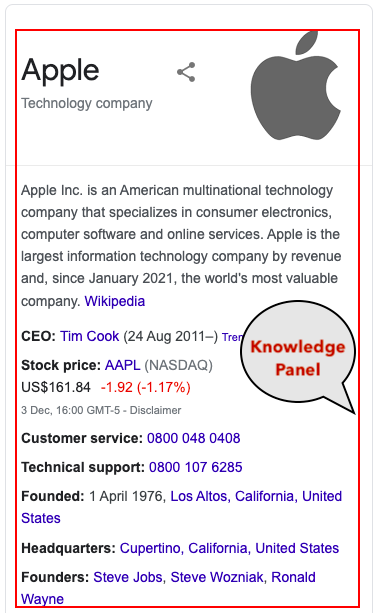
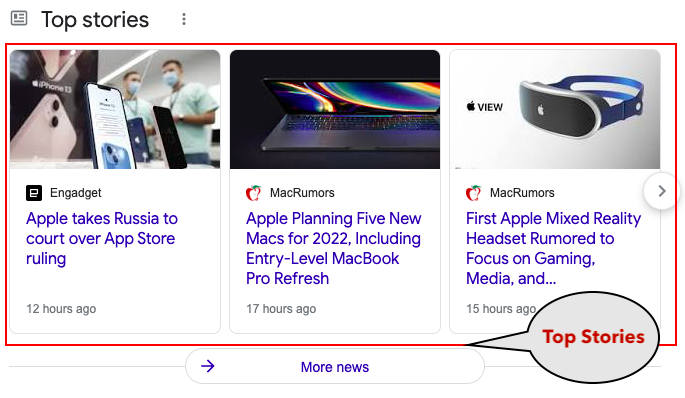
Commercial – ‘Best SEO Companies UK?’ would usually include a featured snippet such as ‘people also ask’ boxes or paid Google ad results giving the user the answer to their query helping them further down the sales funnel. As shown below:
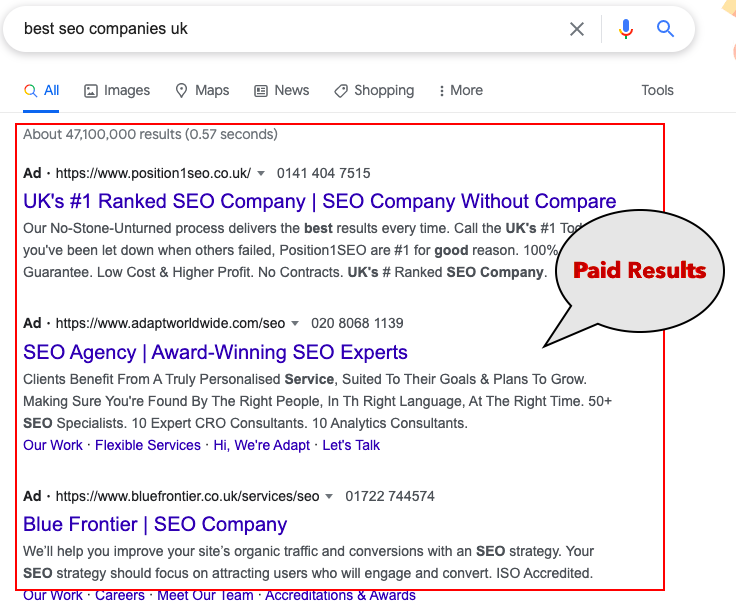
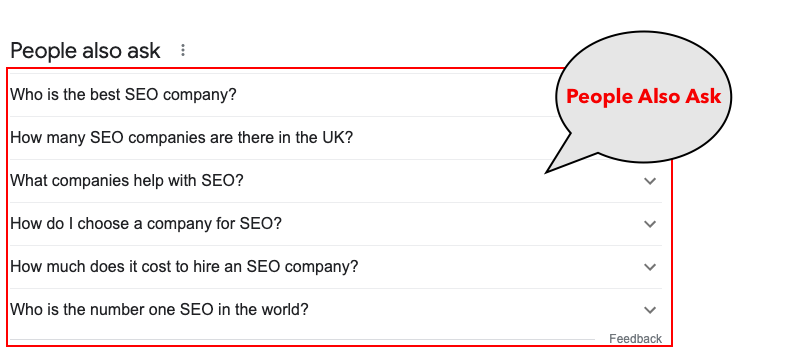
Informational – The query ‘What is search engine optimisation?’ on SERPs, will give you a mix of organic results, knowledge panels from Wikipedia and high-quality blog posts. As we have discussed, it is all about the user fishing for more information, therefore, the more information they receive from their query the better.
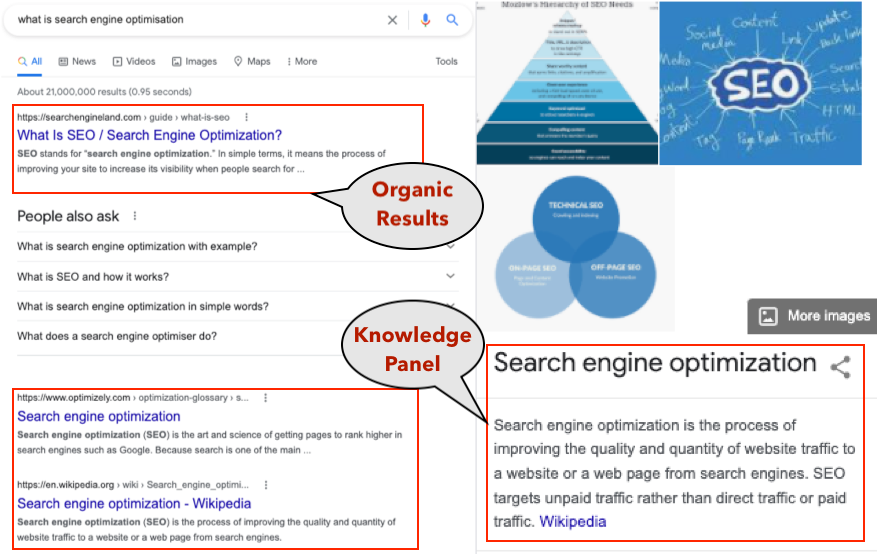
Transactional – We are getting specific now, therefore the term ‘LG 42-inch smart TV in black’ will usually return paid ad results, shopping results, carousels, images and reviews precise to your query. After all, you have asked Google for an exact match theoretically, it should match your requirements 😉

As you can see, depending on your intent the SERPs will vary. So, it is key to make sure that you carry out in-depth research for keywords and competitors and to fully understand the search intent before optimising your content.
4. Plan your content format
Once you have done your research and fully understand your search intent for your content, it is hugely important to prepare and plan how you’re going to implement these integral aspects.
You want to make sure that your content has enough depth of the search query. For instance, if you are going to be writing about your services or products on a page that has commercial intent, you will need to ensure that you are answering all the questions a user may be thinking and wanting to know about your specific service or product that you provide – such as advantages of the service, specific features of the product or benefits of the product over other competitors. After all, it’s about providing value to your users and creating content that is going to be useful for your audience.
Another tip is to make sure your content is presentable and matches your intent. For example, if you are going to be creating SEO content targeted for informational intent, you may want to add features that provide better clarity and readability for your readers such as aesthetically laying out your content with bullet points, graphs and images. All of these can provide value to what the user is looking for and give you the chance to improve the user experience design for your website.
Are you optimised for Search Intent?
If you want to supercharge your content to impact your rankings, you need to understand why search intent is important and how applying it to your content can really shake up your results!
Just remember, Google's main aim is to make sure they are providing the most valuable content to users search queries, and the best way you can adhere to this is by doing your research to understand your search intent, plan your content and recognise how your intent can make an appearance on SERP features.
We hope that this blog has given you a better understanding of search intent and how it can be used in any industry! If you are looking for extra support within digital marketing or would like to learn more please do not hesitate to get in touch, and one of our professionals would be more than happy to help.
06 December 2021